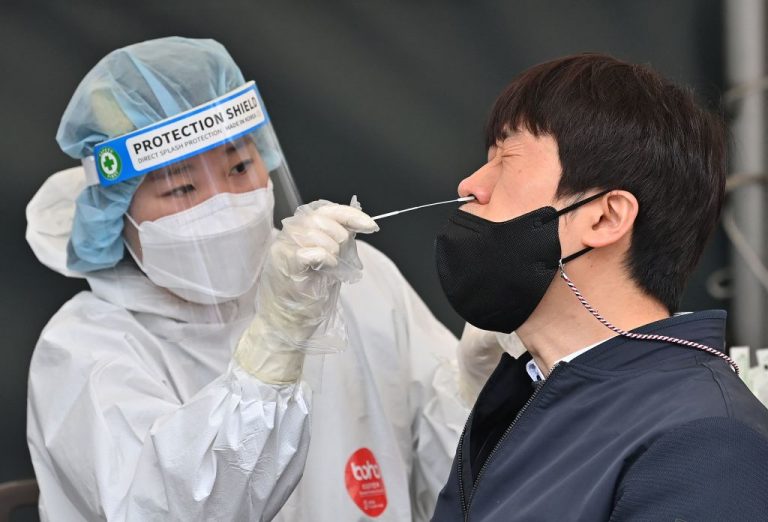The number of positive PCR test results and COVID-19-attributed deaths keep soaring in South Korea and other countries with similarly high vaccination rates and other extreme COVID-19 mandate regimes.
Last week, the caseload of so-called COVID-19 infections, which are often merely positive PCR tests, over the past two years struck the 10 million milestone—or around 20 percent of the total population—in South Korea.
READ MORE:
- Hong Kong Hospitals Placing Body Bags Under Patients’ Beds as COVID-19 Surges Out of Control
- Is Omicron Also a Gain of Function Experiment Turned Lab Leak?
- Yoon Suk-Yeol Wins South Korea Presidential Elections by Paper-thin Margin
As the country is still ramping up its testing frenzy, the number is not expected to ease anytime soon.
According to statistics provided by the Korea Disease Control and Prevention Agency (KDCA), the total number of COVID-attributed cases reached 10,427,247 on March 23, with 490,881 new cases on Tuesday alone.
The official death counter reached 13,432, up 291 from the day before. Reportedly, crematoria and funeral sites are having a hard time keeping up with the steadily increasing death rate.
Success
You are now signed up for our newsletter
Success
Check your email to complete sign up
The situation seems out of control, despite a robust national vaccine acceptance rate of 87 percent being twice inoculated and 63 percent having taken the booster.
Authorities are sounding alarm bells worldwide, but are they sounding the right ones?
Bodily overflow
Meanwhile, it’s an all-hands-on-deck situation for Korean authorities who loosened up restrictions on spilling over of the stream of superfluous bodies, allowing them to be cremated in other lesser populated districts.
“Crematories’ capacity is increasing,” said ministry official Son Young-Rae, according to Reuters. “But there are still regional differences.”
Although officials have already ramped up cremation capacity nationwide from 1,000 to 14,000 per day, facilities in especially densely-populated areas such as Seoul still have to deal with a surplus of unprocessed, decaying bodies, the official admitted.
The Health Ministry ordered 60 cremation facilities to stretch their operating hours and incinerate as many as seven bodies a day, up from the previous maximum of five, in addition to 1,136 funeral reception rooms to boost their cadaver storage capacity.
In Seoul alone, a total of 28 cremation facilities were operating at 114.5 percent of capacity, while those in other regions like Jeju and Sejong worked at about 83 percent capability.
With the number of critically ill patients steadily at or above 1,000, officials expect the number to multiply towards 6,000 in April. The ICU occupation rate stood at 64.4 percent on March 16, up from 59 percent two weeks earlier.
Meanwhile, the mortality rate, having doubled in a matter of weeks, continues to rise, with the death toll steadily tallying three-digit numbers.
“The medical system is under substantial pressure, though it is still operated within a manageable range,” health ministry official Park Hyang told a March 23 briefing.
“We would focus more on high-risk groups going forward, and make constant checks to ensure that there is no blind spot,” he added.
Other therapies
With the advent of Omicron, Big Pharma’s vaccinations don’t seem to work. Doctors are resorting to new pharmaceutical medicines like Merck’s molnupiravir pill, branded as Lagevrio, which authorities have granted emergency approval after they had already approved the Pfizer-made paxlovid pill.

















